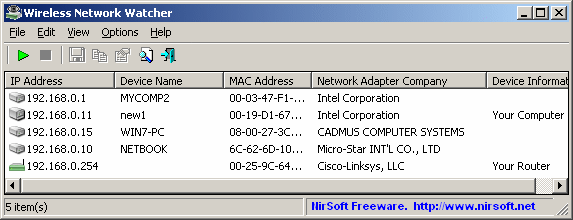When comparing European Rail with Indian Rail you will notice quite a lot of differences. European rails are limited companies & are definitely more professionally managed as compared to Indian Railway which has catered to fancies of Railway Ministers who had no understanding or education to manage railway. Ministers did not know How & Why railway has to run like a profitable business if it has to safely transport passengers. A loss making company cannot spend on safety of its passengers and accidents will further cripple the railways. Railway does not need to server Fancy Tea in Mud Cups to become popular - Indian's requirements are very basic, we want punctuality, cleanliness & above all safety of passengers.
Being software architect and a fan of Event Driven Architecture ( An event triggers a software process that checks the type of event and accordingly performs predefined relative action, helping us build smarter software that can decide next task based on previous event). To give a simple real life example, if a "Duranto Fast Train" that is supposed to travel with max speed of 120miles per hour in a particular sector, crosses a station at speed of 130 miles per hour then an unmanned 'Speed Sensor" located at every few kilometers, will captures the speed and sends it to a Rail Database in Real Time or Immediately in layman's language. What happens next is that a Smart Software program that is watching Database for any unusual event understand that the current speed captured by sensor is more than Speed Limit for this particular ' Duranto Fast Train' and this is a EVENT that needs to be ACTED upon. The program next checks what are the recommended actions for 'THIS OVER SPEEDING EVENT' and triggers those actions.
Let's say there are 3 recommended actions in the given order of priority
1) Send SMS to driver that he is over speeding along with time, location & speed data
2) Send SMS to NEXT 5 stations to manually monitor the speed of the train
3) Send SMS to Rail Management so that over-speeding is captured in drivers report card & he is given warning and training if required
The software will perform above 3 actions and continue to watch for other events. Since it is smart software it is able to use other data to identify each train running across the country so One Software will be useful for all trains. This is very simple & limited example of how Sensor, Software & Internet can bring automation in monitoring one aspect of operation & improve safety - rail safety has many aspects as we are all aware and Sensor/Software/Events can help make rail journey safer. Railways in Europe are using Ultrasonic and Microwave sensors to detect flaws in engine parts, wheels, tracks. Ultrasonic sensors emits short ultrasonic pulses and detects the echoes that are reflected from the object - in this case the train. he echoes can be analyzed to predict potential breakdown and help prevent accidents before they can happen. Indian Railways only advantge is as a late comer they have options and technologies that have been tested so they can pick and choose and go for a custom solution. Is railway considering it? Spending money on research is great but if the research does not consider the lessons learnt by Euro Rail and US Rail and comes out with totally different type of solution that has not been tested in real life then we are wasting money. Companies likfe TIBCO have worked withh US and European railways to design Sensor based solutions and they can guide Indian Railways. I would be keen to work on such a project that will change the security paradigm of Indian Railway and guarantee safe journey to each Indian traveler
Being software architect and a fan of Event Driven Architecture ( An event triggers a software process that checks the type of event and accordingly performs predefined relative action, helping us build smarter software that can decide next task based on previous event). To give a simple real life example, if a "Duranto Fast Train" that is supposed to travel with max speed of 120miles per hour in a particular sector, crosses a station at speed of 130 miles per hour then an unmanned 'Speed Sensor" located at every few kilometers, will captures the speed and sends it to a Rail Database in Real Time or Immediately in layman's language. What happens next is that a Smart Software program that is watching Database for any unusual event understand that the current speed captured by sensor is more than Speed Limit for this particular ' Duranto Fast Train' and this is a EVENT that needs to be ACTED upon. The program next checks what are the recommended actions for 'THIS OVER SPEEDING EVENT' and triggers those actions.
Let's say there are 3 recommended actions in the given order of priority
1) Send SMS to driver that he is over speeding along with time, location & speed data
2) Send SMS to NEXT 5 stations to manually monitor the speed of the train
3) Send SMS to Rail Management so that over-speeding is captured in drivers report card & he is given warning and training if required
The software will perform above 3 actions and continue to watch for other events. Since it is smart software it is able to use other data to identify each train running across the country so One Software will be useful for all trains. This is very simple & limited example of how Sensor, Software & Internet can bring automation in monitoring one aspect of operation & improve safety - rail safety has many aspects as we are all aware and Sensor/Software/Events can help make rail journey safer. Railways in Europe are using Ultrasonic and Microwave sensors to detect flaws in engine parts, wheels, tracks. Ultrasonic sensors emits short ultrasonic pulses and detects the echoes that are reflected from the object - in this case the train. he echoes can be analyzed to predict potential breakdown and help prevent accidents before they can happen. Indian Railways only advantge is as a late comer they have options and technologies that have been tested so they can pick and choose and go for a custom solution. Is railway considering it? Spending money on research is great but if the research does not consider the lessons learnt by Euro Rail and US Rail and comes out with totally different type of solution that has not been tested in real life then we are wasting money. Companies likfe TIBCO have worked withh US and European railways to design Sensor based solutions and they can guide Indian Railways. I would be keen to work on such a project that will change the security paradigm of Indian Railway and guarantee safe journey to each Indian traveler









